We may receive a commission when you use our affiliate links. However, this does not impact our recommendations.
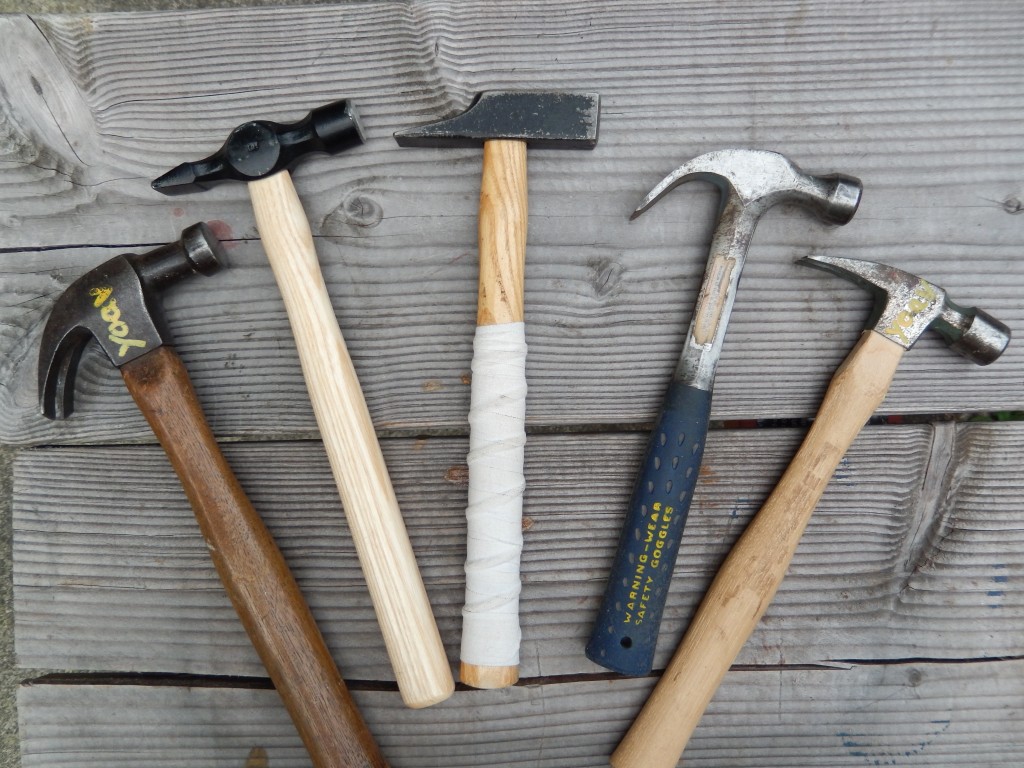
Woodworking hammers, from left to right: Medium-weight claw head; Warrington; French/German; two of my lightweight claw hammers.
After concluding my very subjective series on the best design for round-headed mallets, I decided to dedicate one (or two) entries to the cabinetmaker’s hammer. Traditionally, hammers are used for driving nails head on, driving nails using a nail set, and for persuading stubborn furniture parts to get together during glue-ups. But because the craft of making quality furniture has became predominantly associated with wooden joinery techniques, and with the advent of rubber, rawhide and plastic no-mar mallets, the role of hammers in our shops has diminished.
However, with the contemporary interest in high-quality hand tools and the return of heirloom nails in furniture construction (see Christopher Schwarz’s blog entries on nails) I hope that we might be on the verge of a cabinetmaker’s hammer renaissance.
What is a Cabinetmaker Hammer?
It is essentially a hammer with a long and tapered cross peen (also spelled “pein”) that comes in two patterns, English and French/German. The English has a roundish body with a cross peen located on the long axis of the head; it’s commonly known as a Warrington hammer. The French/German hammer (also called a “joiner’s hammer”) has long rectilinear proportions with the cross peen forged as a lower protrusion of the head.
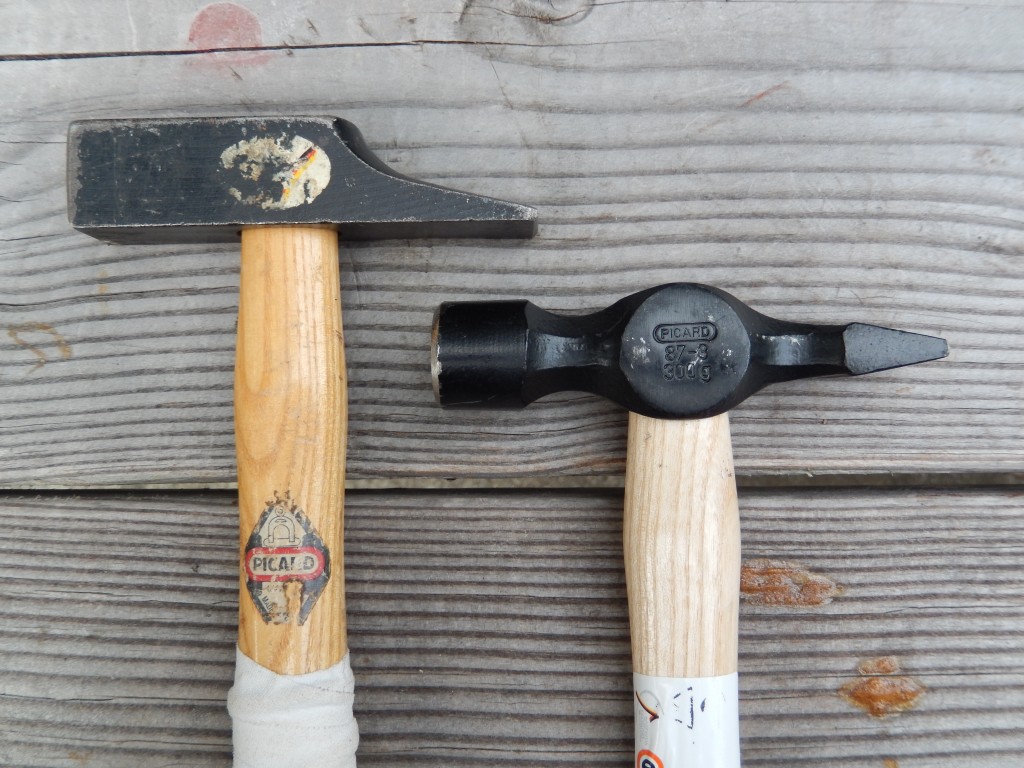
These are the the cabinetmaker’s hammers that I use often. The hammer on the left is of the French/German pattern, on the right is the English or Warrington pattern.
What are they Good For?
Perhaps the first questions you might ask are, “Are the advantages of the cabinetmaker’s hammer so significant that I should consider owning one, and is it so much better than my vintage carpenter’s claw hammer?”
There is no doubt that both hammers can do a good job, and in fact I own a few of each and use them often. In general, I use my carpenter’s hammer to drive heavy nails on big construction jobs where the claw comes in handy to extract mishaps, and for dismantling nails and parts at the the end of a temporary installation.
Still, I prefer my 10 oz or 12 oz cabinetmaker’s hammer for nailing jobs related to woodworking. Why? For a few reasons: It is a compact hammer that is nicely balanced; I like to use the cross-peen end of the head to initiate the penetration of small nails and brads; I use the cross peen for all kinds of tasks and especially for forming and bending hardware when needed; and, I’ve found out that the cross-peen end is very helpful in straightening up bent nails after extraction. I speculate that the latter, among other advantages, is what made this hammer so successful for cabinetmakers. For centuries nails were used in many aspects of woodworking, but nails were not cheap and could not be tossed away when accidentally bent, or when a furniture piece was pulled apart for restoration. This hammer, with its narrow head, could be very handy in coercing deformed nails back into usefulness.
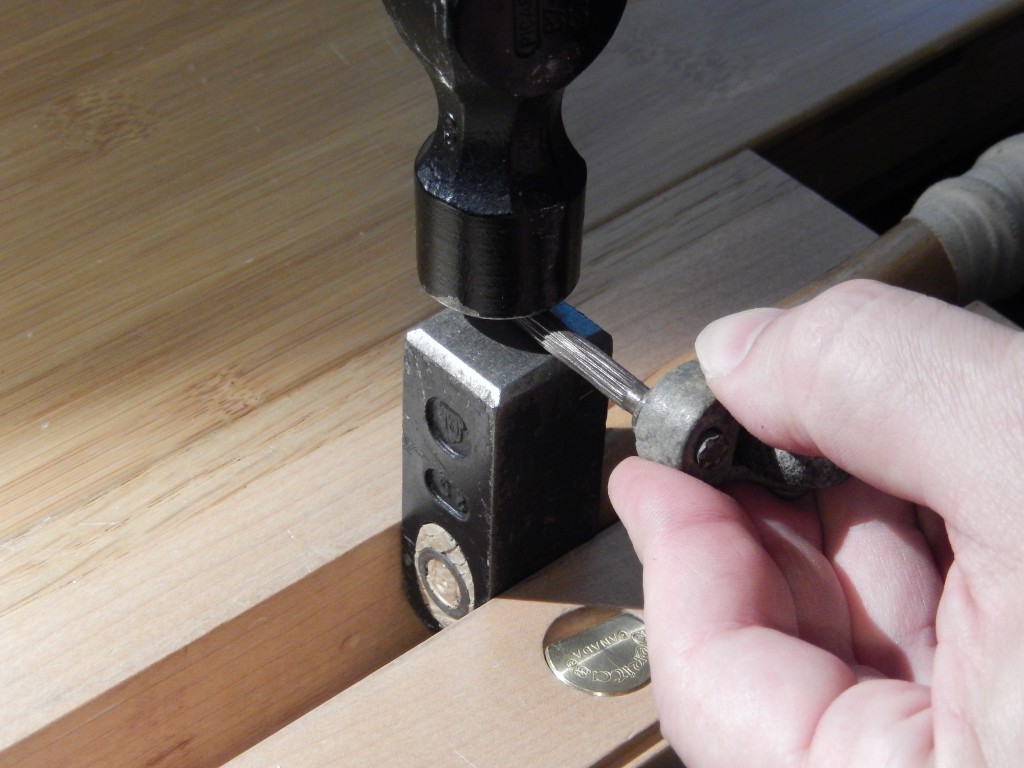
Here you can see how my French/German joiner’s hammer can be used as a makeshift anvil when clamped in a vise.
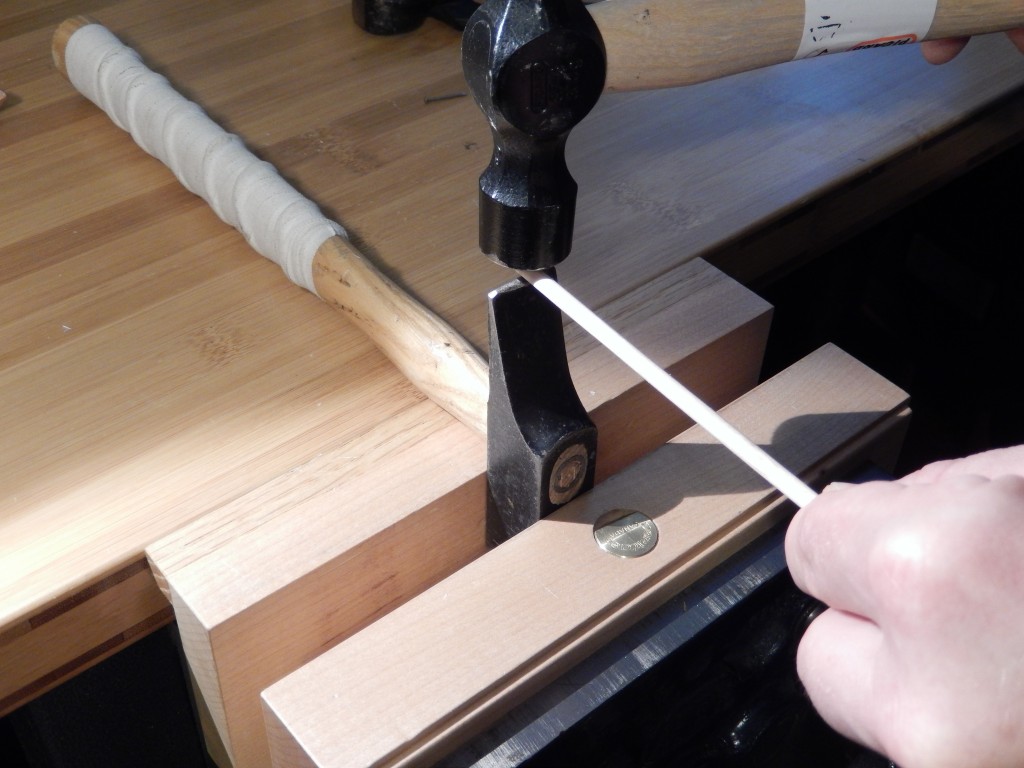
The peen of my French/German joiner’s hammer can be used as an even smaller makeshift anvil for all kind of chores.
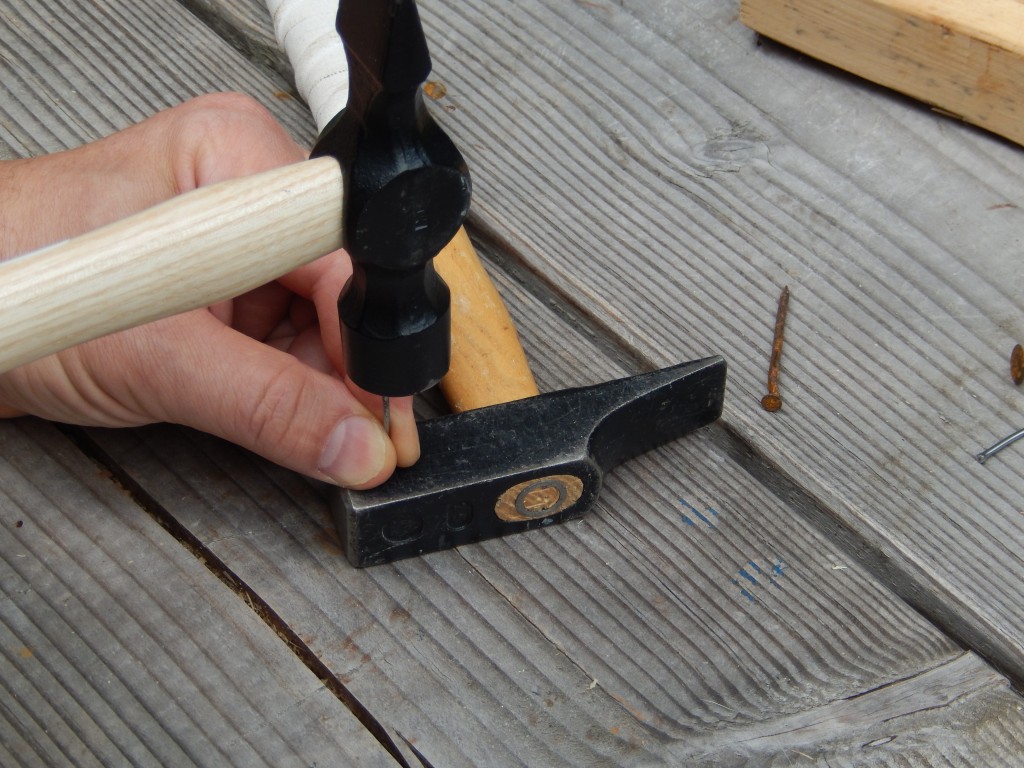
I use my French/German hammer on its side as an anvil to compress the tip of a nail before driving it into the wood. This will ensure the piece won’t split.
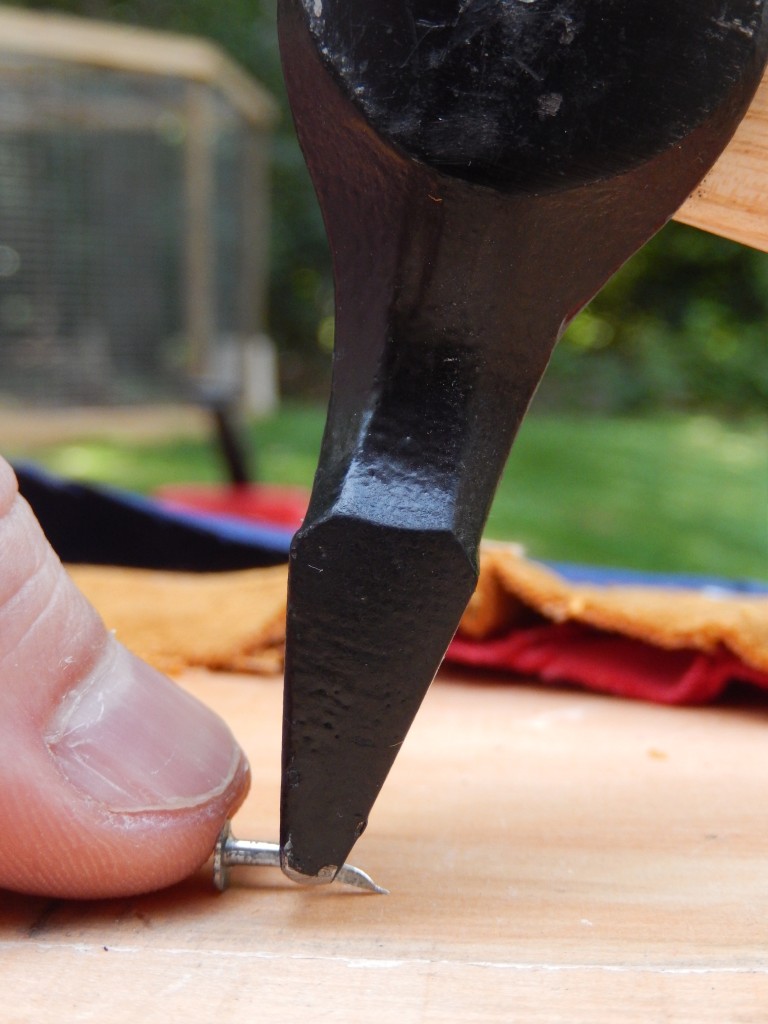
Which of the Two Patterns is the Best?
The Warrington, or the English pattern, feels more balanced in my hand, probably because the head is forged symmetrically. However, the French/German hammer has the advantage of having a square head, which can be useful when hammering in tight spaces – close to an inside corner of a frame, for example. This design is also handy if you need a makeshift anvil; just place the hammer side-down on the bench, or brace it in your vise for added controlled. In addition, the right-angle corners of the hammer and its cross peen can be very useful for folding over nails before clinching, or, as I’ve mentioned, to straighten them after extraction.
How Heavy Should the Hammer Head Be?
I would say that the 10/11 oz (300/330 gr.) head is the probably the jack of all trades. The 8 oz head is useful for nailing smaller nails, and the 12 oz hammer is great for hammering bigger nails, such as when joining the sides of a tool box and likewise heavier joinery chores.
In my next post, I’ll talk about where to buy hammers.
Here are some supplies and tools we find essential in our everyday work around the shop. We may receive a commission from sales referred by our links; however, we have carefully selected these products for their usefulness and quality.



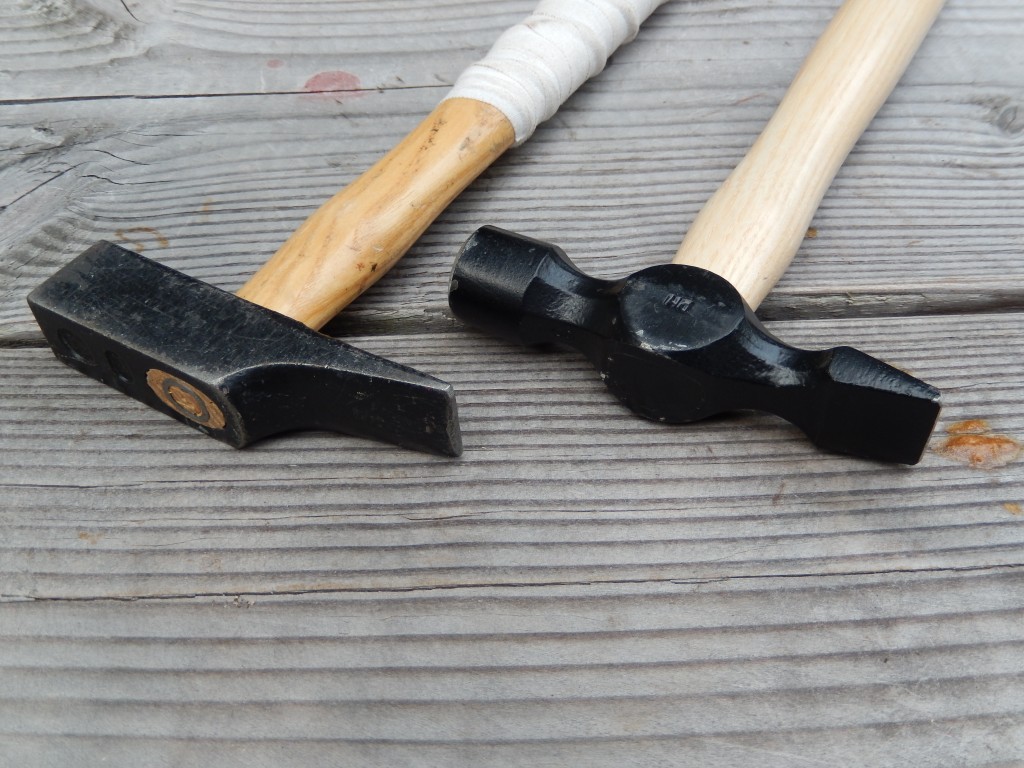
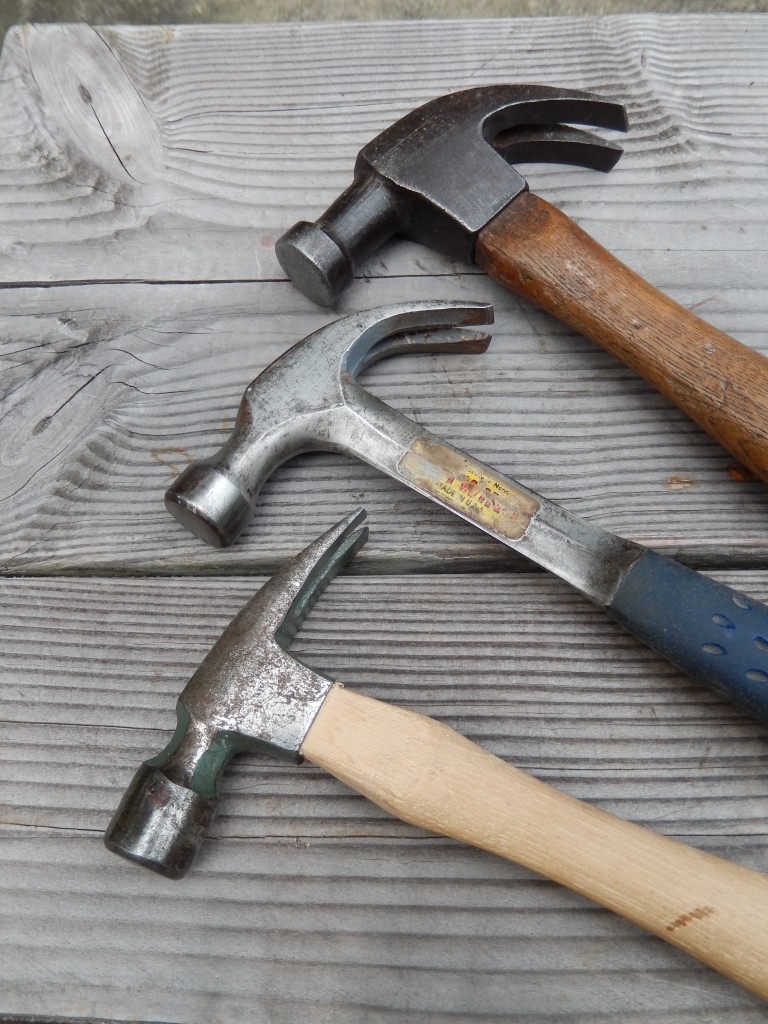
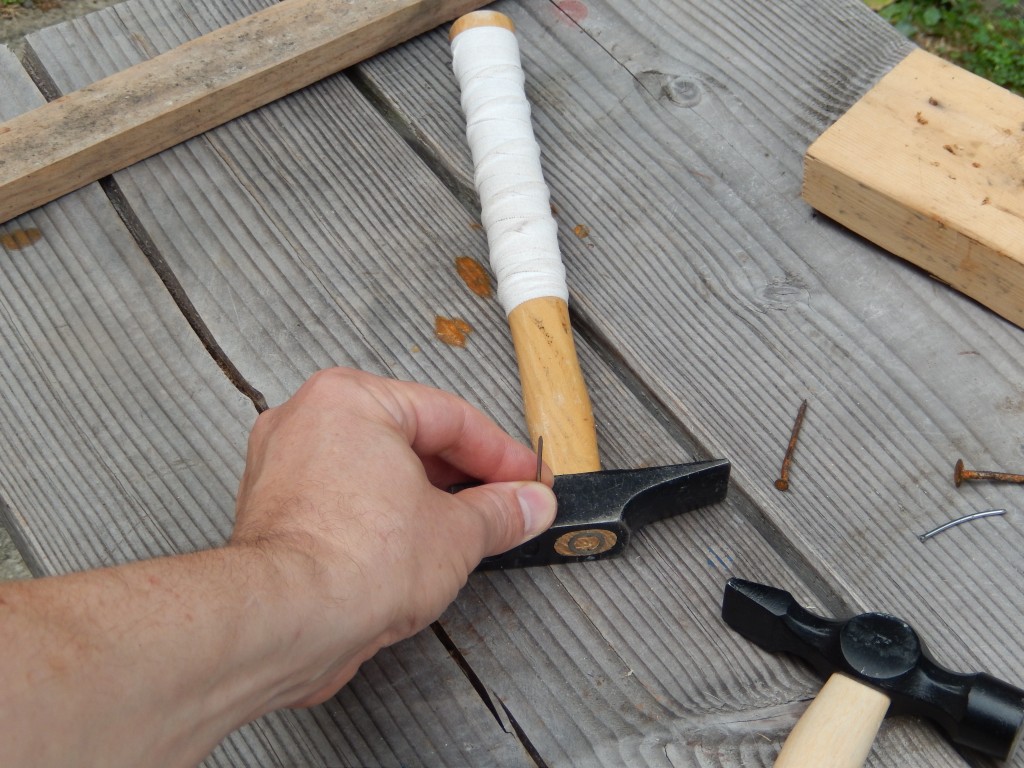





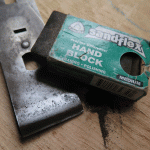

Can you please say more about smooshing the nail so it does not split the wood? It looks like that description is matched to a photo of you hammering the nail vertically against the other hammer, as if trying to drive it in.
Thanks
“Crazier than a bag of hammers?
Liked your article on hammers, thank you.
As you can see I LIKE hammers too. I’m sure I have more than in the picture too.
Yoav, my hats off to you. I agree that the cross peen end would be great for small nails/brads if your aim is perfect. I need a wee bit more head on the end, like a well poured pint of ale. I have a 10 oz upholsterer’s tack hammer that I would be lost with out. Magnetic on one end, it even save my fingers with the smaller brads. Another similar upholsterer’s hammer has a split end for small brad extraction. Where these would not ordinarily be considered cabinetmakers hammers, they are awesome for small work.
Of those mentioned I prefer the Warrington with it’s round shape as opposed to the Exeter with its sharp edges. Working in tight places the Warrington doesn’t pose as much an issue to possible gouges in surrounding material. Again, if your aim is perfect none of this makes a difference.
Looking forward to your next installment.
I SO LOVE the Gramercy Kings County hammer but I simply cannot justify the cost. Beautiful tool, and one I am saving up for 🙂
Nice range of hammers there Yoav. I also know the “French/German” hammer to be called an Exeter Hammer too although a google search revealed the Exeter to be a 50/50 split of “French/German” and Warrington.
I must admit I’ve had an Estwing like yours since I started work and it’ll be a cold day in hell before I give that one up. I’m not sure it’s because it’s the best but I’ve used it for so long that it just an extension of my mind.